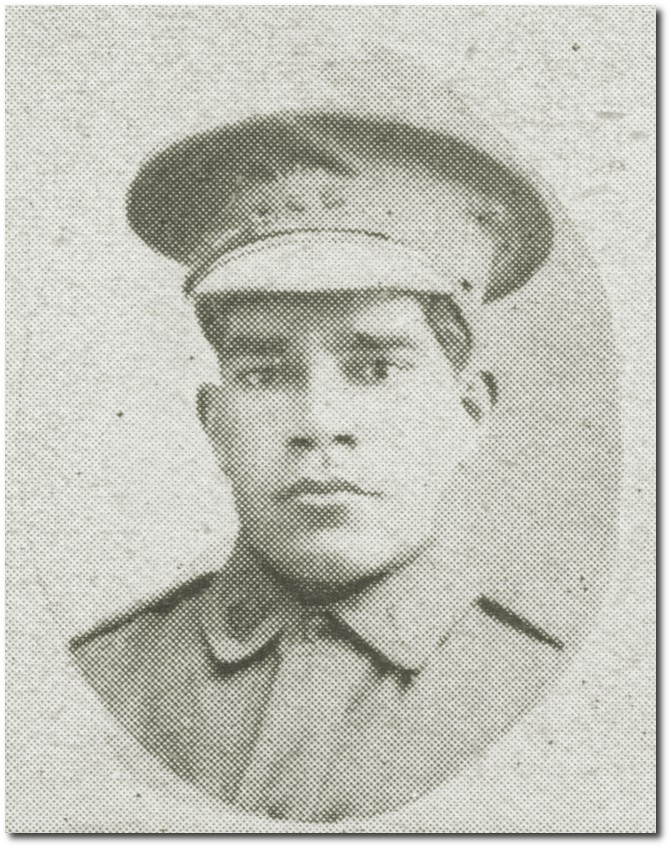
James McBride, The Queenslander Pictorial, 1917
Indigenous Australian, James McBRIDE, 11th Light Horse Regiment
James McBride was working as a labourer in Brisbane in September 1917 when he volunteered to serve with the first AIF. Born in Sydney in 1895, he had a close association with the Woodburn / Swan Bay region in northern New South Wales. He named his friend Thomas Frederick Butler as his next of kin when he enlisted, and it was to Woodburn that he travelled on 'home leave' to say farewell prior to embarkation.
Many men like James McBride travelled to Brisbane to enlist to improve their chances of being included in the Light Horse Regiments. Fortunately for James, the authorities were putting together a group of reinforcements for the 11th Light Horse Regiment at this time, at the Rifle Range army camp in Enoggera.
It was here that he had his photograph taken at one of the 'tent studios' that operated outside the camp and published just prior to his embarkation.
The 20th Reinforcements included many other Indigenous servicemen and later became known as the Queensland Black Watch. They embarked on board the troopship Ulysses bound for Egypt in December 1917, arriving at Port Suez early January 1918.
Their first camp was at Moascar, outside of Cairo where they were isolated in case of infectious diseases such as mumps and influenza, followed by several months at the 4th Light Horse training Regiment camp, for incoming reinforcements.
McBride and the remaining men of the 20th Reinforcements, joined their Regiment in the field 12 April 1918 where it was deployed at Selmeh near Jaffa. Just a few weeks later on 1 May, during the Second Battle of the Jordan, the regiment was under attack from the enemy as it was sent forward to capture the Jisr ed Damieh bridgehead, over the Jordan River. McBride was wounded in this action, hit by a bullet in the thigh above his right knee.
Evacuated for treatment, McBride was at first taken to a Casualty Clearing Station, then to military hospitals in Gaza, and Kantara and finally the 14th Australian General Hospital at Port Said. He spent almost three months away from the Regiment, finally rejoining them in July at Auja, 10 kms north of Jericho.
Later that year as the conditions of war took their toll on all the men, McBride was treated for fever (PUO) mostly likely malaria, which affected troops those troops who had spent time in the mosquito ridden Jordan Valley.
McBride remained with the Regiment until they were finally scheduled for return to Australia, via the troopship ‘Morvada’ and disembarked in August 1919.
Read more ...
- Service record: McBRIDE, James
- EMBARKATION ROLL: 20th Reinf. 11th Light Horse Regiment
- Second Battle of the Jordan In Wikipedia, The Free Encyclopedia
- 'Many served: AIF Aborigines', Reveille, 30 November 1931, p.22
- One of the soldiers featured in SLQ’s HistoryPin Collection
- Queensland’s Indigenous Servicemen [oral history]
The information in this blog post has been researched by State Library staff and volunteers, it is based on available information at this time. If you have more information that you would like to share or further research uncovers new findings, this post will be updated.
Comments
Your email address will not be published.
We welcome relevant, respectful comments.